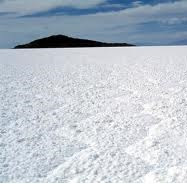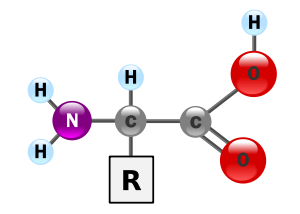Post n. 12 English
The universe originated 13.6 billion
years ago. Studies show it was the Big Bang to have led the way to the origin
of life.
The facts that lead to similar
claims are the so-called "natural constants". As reported by the
physicist Paul Davies in "Una fortuna cosmica" in 2007, the story
begins in
1950. At that time physicists could not understand how carbon was
formed in stars. The fusion of two nuclei of helium gives out beryllium, if
which bumps another helium nucleus should give out carbon. The problem is that
Beryllium is unstable and decomposes before it can be hit by a helium
nucleus. The carbon and therefore life would not have existed. Fred Hoyle who
solved the problem proposed that the Beryllium presented a peak of nuclear
energy, or what physicists call resonance, which would extend its existence
by a few fractions of a second. It has been shown that beryllium has actually
this resonance and it is thanks to this trifle
energy that the synthesis of carbon is possible and therefore the origin of
life.
 |
| ionnkorr.blogspot.com |
Davies also mentions both the strong
nuclear force, like the force that binds protons in the nucleus, and the force
of attraction between electrons (-) and protons (+).
If these forces were slightly more
intense or less intense even by 1%, the universe would be completely different
and life impossible. The same considerations apply to the force of gravity and
the weak nuclear force: the force that controls the decay of the neutrons.
Reflecting on these and other facts, around the late 70s, the astrophysicist
Brandon Carter coined the term "anthropic principle" to indicate a
universe cut right for life.
Respectful scientists expresses
ideas that go in that direction even if they do not accept the anthropic
principle, as the physicist Freeman Dyson said: "The more I examine and study
the details of its architecture, the more it is evident the universe, somehow,
already knew “we were coming ".
The famous biologist Simon Conway
Morris goes even further when he says: "There is as we could say an
inevitable intelligence in the universe". And Paul Davies seems to
believe in the existence of a purpose in the mechanisms of the universe at a
fundamental level, not accidental and without an agent pre-existing purposes
miraculous. As it is for some scientists, Life is in the laws of the universe.
However, it is a topic on which we
have very little to say so we limit ourselves by writing down facts. We leave
cosmologists and physicists final outcome of future insights and to
philosophers and theologians their ultimate meaning.
The stars, through nuclear fusion of hydrogen, they formed the nuclei
of natural chemical elements. In particular, in stars with a mass greater than
1.5 solar masses, begin the formation of carbon (C), nitrogen (N), oxygen (O).
As the mass increases, the temperature of the core increases too and elements
with greater mass are formed. And finally, the collapsing and consequently, the
explosion of massive star about ten times the sun’s mass, and all the natural
heavy elements formed. All these elements are dispersed in space. Starting from
the Big Bang, through the nuclear fusion of hydrogen, the stars took about 5
billion years to fertilize the space. In this first phase of the universe, the
amount of carbon, nitrogen and oxygen was poor, and rocky planets could not
exist because there wasn’t enough silicon.
On how the universe in the future
will change when the relations between elements will vary is still a topic
under study.
At this present state in the
universe for every million hydrogen atoms, there are 350 of carbon, nitrogen
110 and 670 of oxygen, while most of the remaining elements are about the
unit or much less. So biogenic elements (H, C, N, O) are by far, the most
abundant elements in the universe. We can therefore imagine the atoms of
carbon, nitrogen, oxygen immersed in an atmosphere of hydrogen. The matter in
space is very thin and subjected to the most diverse conditions of temperature
and radiation. However, in the long run, these elements ionized by ultraviolet
rays and through random collisions, become molecules of very simple substances.
In fact radio astronomy has identified some molecules in the space formed by
these elements, mainly: methane (CH4), ammonia (NH3), water (H2O), hydrogen
cyanide (HCN), formaldehyde (HCHO),
carbon monoxide (CO), and in smaller quantities other simple molecules such as formic aldehide, urea, simple alcohols and ketones.
Part of these substances are
destroyed by ultraviolet rays that then later reform in other places. Since the
temperature in those areas is around -250 ° C, a large part gets
frozen on dust particles away from the deadly
rays. The elements produced by stars and simple molecules together with dust particles (silicates, metal oxides, ice crystals) become clouds of gas and dust that give birth
to planetary systems, when highly concentrated.
 |
| fuckyeahnebulas.tumblr.com |
In conclusion, we can say that
planetary systems all start with the same ingredients.
So, what is the chemistry with these
ingredients?
Our solar system originated 4.5
billion years ago. At that time the nebula of gas and dust formed and asteroids
too.
Fragments of asteroids have crashed
on earth in the form of meteorites; in the last two centuries, more than a
thousand have been collected and catalogued. These meteorites, called chondrites because of the presence of
chondrules, beads of melted material; therefore, they are from the same
primordial material from which other bodies of the solar system were formed.
Alan E. Rubin, geochemist at the
University of Los Angeles conducted a study on chondrites and presented the
results of his research named, "I segreti dei meteoriti primitive" Le Scienze, April 2013. The intention of Rubin
was only to build a map of the structure of the solar nebula. From this research,
we can draw out some useful information for our purpose.
So chondrites represent 80% of the
meteorites fallen on Earth. The study of the chemical characteristics led to
identify a dozen groups.
All these groups are included in
four classes: enstatite chondrites formed between 0.5 and 1.5 AU (1 astronomical
unit Sun-Earth distance), ordinary chondrites over the two UA, Rumuruti chondrites from 2.5 to 3 UA and
finally between 3 and 4.5 UA the carbonaceous
chondrites. Beyond this distance begins the
area of the gassy planets. So these meteorites originated from the proximity
of the Sun to Jupiter’s orbit, in completely different environmental conditions
depending on: temperature, radiation, particle velocity, shock waves, etc.
Well, among all these different
environmental conditions only the carbonaceous chondrites contain carbon compounds.
And what are these compounds? Simple organic substances and mainly amino acids,
which are the constituents of proteins.
According to JB Haldane substances
essential for the origin of life originated, in the prebiotic era, on our
planet, starting with the primordial nebula of gas with energy input.
In 1953, S. Miller confirmed this
hypothesis.
After Miller, researchers conducted
several experiments in the most different environmental conditions, using gas
mixtures similar to those contained in the clouds of gas and dust.
Well, as Miller they obtained
different compounds of carbon.
And what are these compounds? Simple
organic substances and mainly amino acids.
So after 4.5 billion years it does
not seem that the chemistry has changed that much.
And then, how many clues do we need
to be convinced that, among the constituents of the macromolecules essential
for life (nucleic acids and proteins), only the amino acids were present in the
prebiotic era?
Now, the same ingredients in the
clouds of gas and dust that gave rise to other planetary systems. In these
planetary systems, the environmental conditions were roughly similar to our
solar system. We can assume then that even in those places, probably, amino
acids formed. And as long as the universe will not change the quantitative
ratios of biogenic elements, it is likely that solar systems in formation will
synthesize amino acids.
Some scientists, as reported by Dimitar
Sasselov in “Un’altra terra" in 2012, are
seeking a synthetic Biology and alternative Biochemistry. In
this context, the complex organic compounds and their reactivity are
represented by the metaphor of a chemical landscape that is a map with valleys
and mountains. The valleys represent the initial conditions, the mountains
instead alternative biochemistry that you might have on other planets according
to the environmental conditions.
 |
| Elab. da: geologia-e.igg.cnr.it |
It isn’t really clear what is meant
by synthetic and alternative, but if you think of a biochemical without amino
acids we’d be discussing about nothing.
As for life and its origin, if we
still want to use the metaphor of the chemical
landscape, amino acids occupy
the only hill and all around is inanimate matter makes us a flat salt desert.
 |
| www.appuntidiviaggi |
Nothing had to go wrong with the
origin of life. The amino acids can’t be replace and since the laws of physics
and chemistry are universal, their properties are unique and universal. It is
from the amino acids where a particular type of matter, organic matter, the
matter of life originates.
The question often asked, could
there be organisms that were using D amino acids (Right) instead of L (Levo)
and Ribose L instead of D; and why not! However, it is unlikely that they are
around the universe. As we will explain, also supported by some experimental
data, the choice of Levo in amino acid is probably a consequence of the
asymmetry of water. Life needs water in liquid state and water in all the
universe has the same asymmetry.
In Miller’s experiment and in
meteorites over 60 different amino acids have been identified. Life on earth
uses only 20 and, when life originated, perhaps it only used 12 to 15, as for
the others life added them much later. It is very likely that the choice of
amino acids was a consequence of the environmental conditions of our planet, if
not all at least part of it.
Finally, as discussed in the
previous article "Proteins: its constituents. Seven
strokes of luck ", inanimate matter provides the matter: amino
acids, with all the right properties for life. It creates a chemical void so
that the creation of life doesn’t go wrong. Inanimate matter also provides a
fairly large number of amino acids, so that life can choose the right ones
according to the environmental conditions on the planet.
What to say!
Come to think, Paul Davies says in
"Da dove viene la vita",
2000: "Placing categories and concepts from the human world on the nature,
is undoubtedly dangerous. Yet, after all, human beings are also products of
nature, and if humans have a purpose, that means at some point, it must be
because of nature, and therefore it is in its genes. [...] Is it possible that
the purpose of nature is an intrinsic property, at a cellular level or even
subcellular? There is no agreement on the answers to these questions, but an
explanation of the origin of life will never be complete if these questions are
not addressed. "
However, it is a subject on which we
have very little to say therefore we limit ourselves to registering data. Let
the philosophers and theologians decipher their ultimate meaning.
What about aliens? So far still
similar to us ... or so.
Giovanni Occhipinti
Translated
by SYDNEY ISAIAH LUKEE










